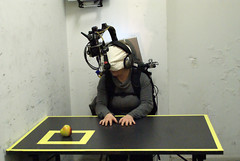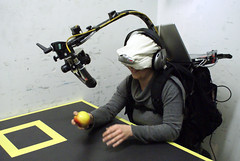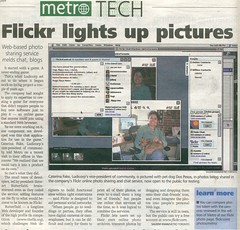Why use emphasis?

Image found on http://www.flickr.com/photos/petereed/496392956/sizes/t/
- Emphasis simplifies the reader’s task and helps them pick out what is essential in your message faster
- It also gives your page an interesting look
- Saves reader more time when reading
- DON’T EMPHASIS EVERYTHING
Decide what is most important
- Decide which words, phrases or graphics are important
- Which portion of message will attract audience
Establishing visual hierarchy
- What is primary message?
- Which element best communicates this primary message?
- Is there a secondary message?
- Which element best communicates the secondary message?
- Is there a tertiary message?
- Which elements best communicate tertiary message?
- Which visual element is the most interesting?
- Which visual element is the most likely to attract or spark the reader’s attention?
- Simpler is better
Establishing visual hierarchy
- What is primary message?
- Which element best communicates this primary message?
- Is there a secondary message?
- Which element best communicates the secondary message?
- Is there a tertiary message?
- Which elements best communicate tertiary message?
- Which visual element is the most interesting?
- Which visual element is the most likely to attract or spark the reader’s attention?
- Simpler is better
Developing Sensitivity to Visual Hierarchy
- Look at other people’s work
- Ask questions about your page and others
- Overtime you will become more sensitive to design
Emphasis Technique
- Professional designers use a number of visual hierarchy
- Like making things brighter, bigger, bolder things like that
Emphasis Example 1
- Few changes can alter an appearance
FLOWERS FLOWERS
BY MARY by Mary
Emphasis Example 2
- Providing emphasis on resumes, flyers or newsletters create stronger impressions
- Easy to scan
- Stick to single alignment
Education Education
Nandua High School Nandua High School……….
Skills Skills
Can type 34 wpm Can type 34 wpm…………
Emphasis Example 3
- ALL CAPS SEEMS TO SHOUT AT READER
- Difficult to read
- Slows down the readers speed
COME OUT TO SEE THE GREAT LOWSTER AT THE TED CONSTANT CENTER ADMISSON IS 15 DOLLARS FOR STUDENTS AND 25 DOLLARS FOR OTHERS!!!!
Come out to see THE GREAT LOWSTER at the Ted Constant Center admission is 15 dollars for students and 25 dollars for other!!!!!
Key Terms
Emphasis- Most important thing should be most prominent
Visusal hiearachy- Arrangement of visual elements
Focal Point- Where you want readers eyes to focus more on
Accents- Accent other important parts of page
Content- Words, phrases and graphics
Body Copy- Small type
ALL CAPS- CAPITAL LETTERS
Works Cited
Graham, Lisa. Basis of Design. Canada.2005. Print











